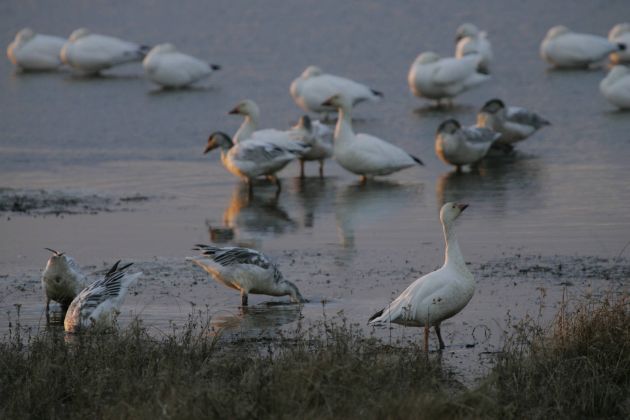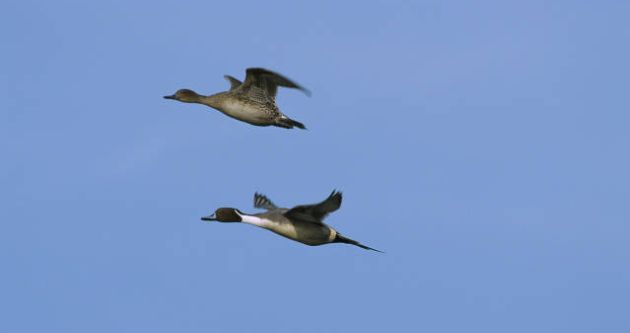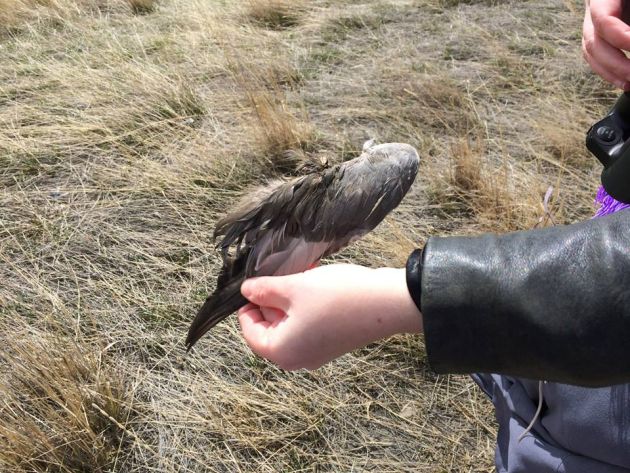
As I mentioned before, Freezeout means Snow Geese, and lots of them. But like any aspect of migration, the lots-of-Snow-Geese phenomenon is ephemeral and to some degree unpredictable, occuring earlier one year, later the next, and then gone as the geese head north to make more geese or south to wait out the winter. Depending on the wind and weather the disappearance can be sudden or gradual, a once-a-season event or a repeater. Geese straggle in late or they linger or they turn back or do all three. But eventually they are not there.
Things hadn’t quite gotten to that point when my friends Asta and Isaac and I arrived at Freezeout, but there wasn’t much white to be seen – perhaps a hundred Snow Geese, mostly passing overhead, and twenty or so swans too far out on the water to identify as to species.
But when the Snow Geese have moved on Freezeout WMA is still a complex of wetlands, never without birds.
The landscape of this region is spectacular in an austere way. East of the iconic Glacier National Park and south of the Montana Hi-Line memorialized in the work of James Welch, the area around Freezeout put me much in mind of the Charles M. Russell NWR — a landscape of rollers punctuated by buttes, long views, little settlements. Arid and swept by winds that would drive a good woman mad, the area is not so friendly to human settlements, but it is the ideal home for its scattered herds of pronghorn and lone soaring Golden Eagles.
How could a lake in such a location fail to call out to waterfowl? Besides the remaining Snow Geese and swans, we were treated to large numbers of Northern Shovelers – a duck that is almost impossible to get bored of, especially the male’s dapper breeding plumage – a few Gadwall, Canada Geese that were starting to get distinctly territorial, and a flotilla of Lesser Scaup with a handful of Redheads and a single Canvasback drake among them. A tiny flock of Northern Pintail – another strong contender for the hotly contested title of most beautiful North American duck – swooped in and settled near a single, still-eclipsed Common Merganser and an equally lone American Coot. Ring-billed and Herring Gulls cruised low along the banks. A muskrat slid into the water and away.
There were no falcons to be seen, but plenty of evidence that someone had had some good meals out of these waters – a pair of Snow Goose wings sans head or body and a single wing of what I suspect was a Gadwall.
Our own needs were more civilizedly met, in the nearby town of Choteau where the Log Cabin Cafe bore a sign that said “Welcome Birders” and then lived up to that promise. The milkshake was excellent and my only complaint with my sandwich was that it was too big to fit in my mouth.
You could say our timing was off; you could bemoan our fate (photos from even a few days earlier show quite a few more geese than we spotted.) I prefer to think of the trip as a success at seeing a different, less-celebrated aspect of Freezeout.















Leave a Comment